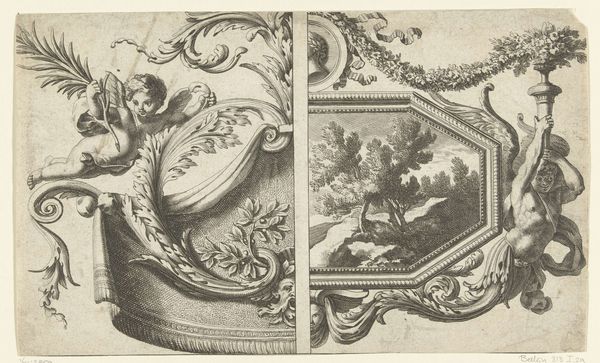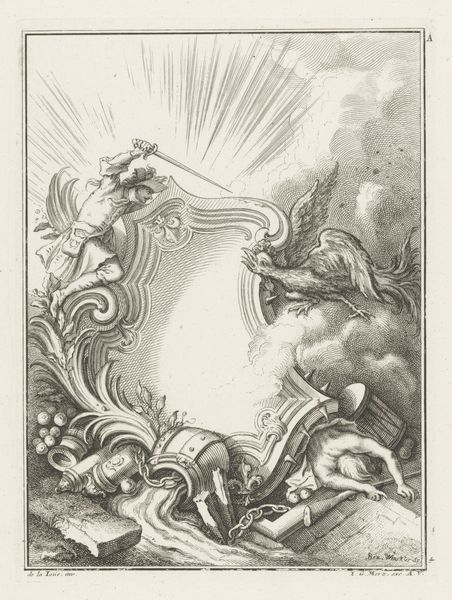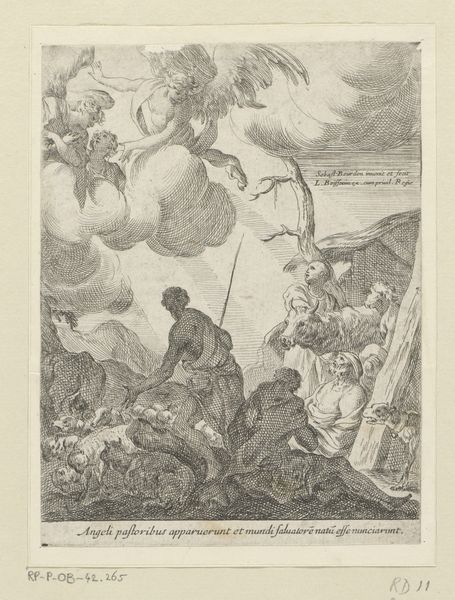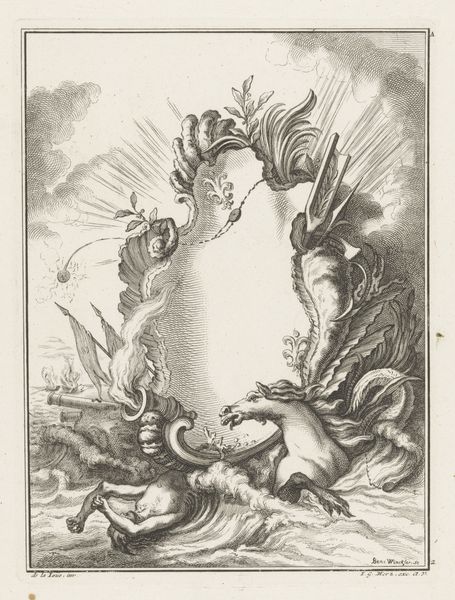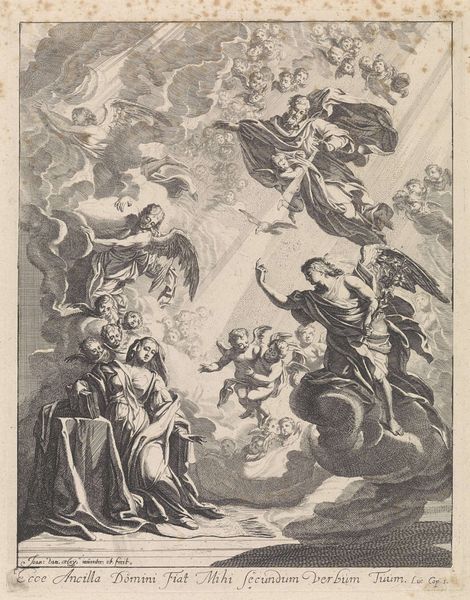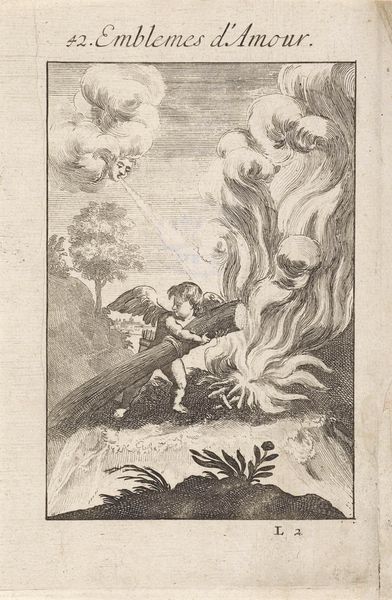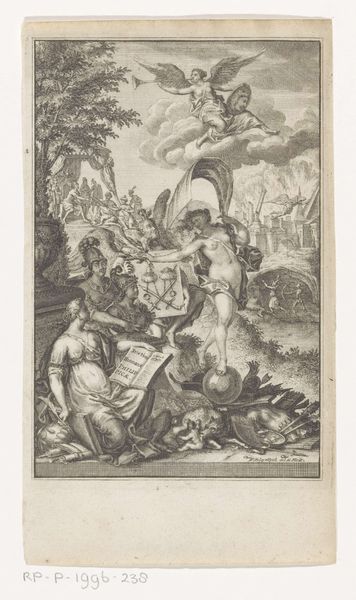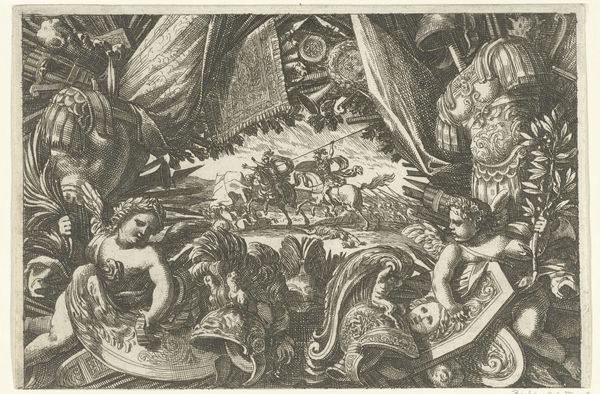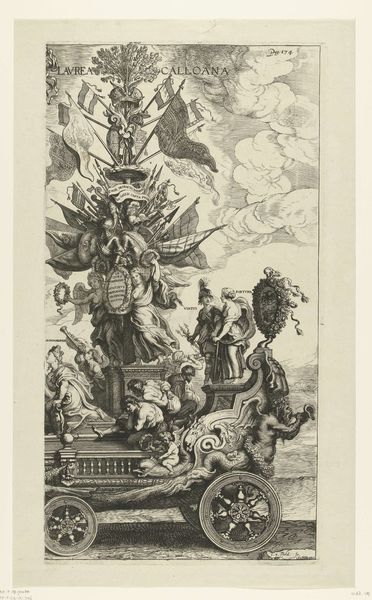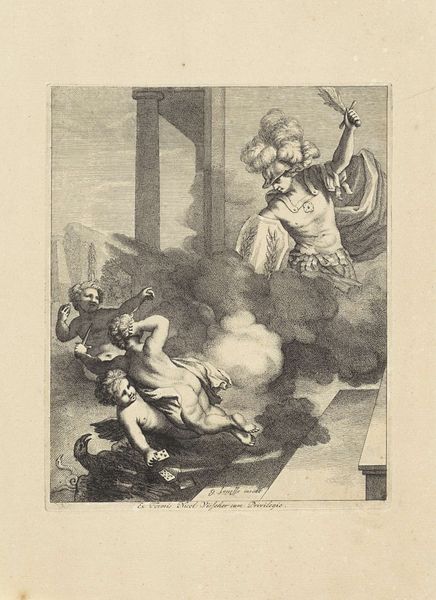
drawing, ink, engraving
#
drawing
#
allegory
#
baroque
#
pen illustration
#
pen sketch
#
figuration
#
ink
#
pen-ink sketch
#
line
#
pen work
#
engraving
Dimensions: height 154 mm, width 268 mm
Copyright: Rijks Museum: Open Domain
Editor: This is "Linkerpaneel met cherubijn, rechterpaneel met engel" (Left panel with cherub and right panel with angel) by Jean Lepautre, created sometime between 1656 and 1706. It's a drawing made with ink, currently residing in the Rijksmuseum. The composition seems split, balanced but also contrasting. What are your thoughts on the structure of this work? Curator: Indeed. Note the rigorous linearity, the balance of positive and negative space, and the semiotic weight carried by the framing devices on the left. Consider how Lepautre articulates depth using line variation. Do you perceive a structural hierarchy within each panel? Editor: I do. The cherub and angel seem dominant, placed centrally, drawing your eye first. Then you notice the objects - a chalice, an altar - and the surrounding floral or cloud-like elements that act as a sort of frame within a frame. It seems very deliberate. How does the medium - ink on paper - play into this? Curator: The choice of ink as a medium invites scrutiny of Lepautre's line quality. Notice the economy of line in the depiction of the figures versus the almost baroque density in the floral motifs. The varying textures create visual interest, wouldn’t you agree? Editor: Absolutely! The contrast emphasizes the softness of the cherubs and angels against the more structured ornamentation. I also wonder about the dove emanating rays of light from between both panels. The lines here create meaning through shape and direction. Curator: Precisely. Furthermore, this directs us to consider the philosophical implications. Light emanates and reveals... This work is much more than just an arrangement of figures and forms. Editor: I see how dissecting the visual elements, their relationships, reveals deeper meaning beyond the literal depiction. I initially responded to the overall scene, but I now appreciate the careful artistic choices. Curator: And I’m reminded that visual analysis often involves multiple, sometimes conflicting interpretations that exist simultaneously.
Comments
No comments
Be the first to comment and join the conversation on the ultimate creative platform.

